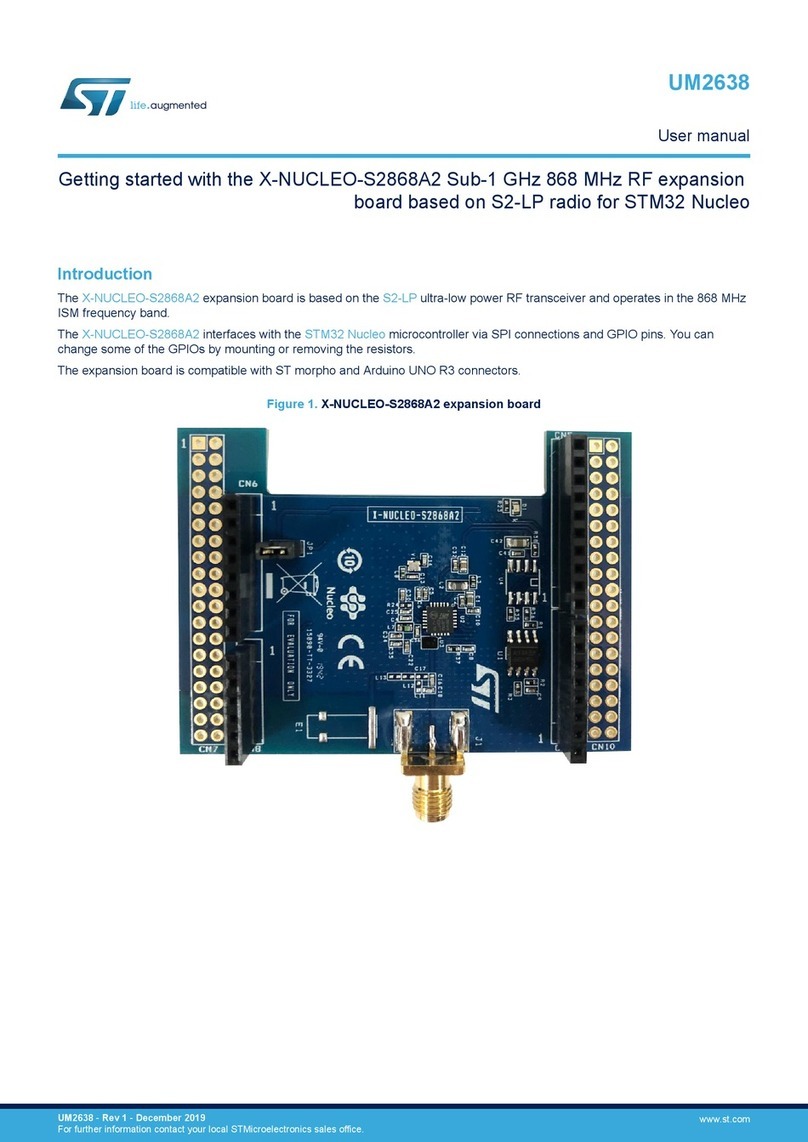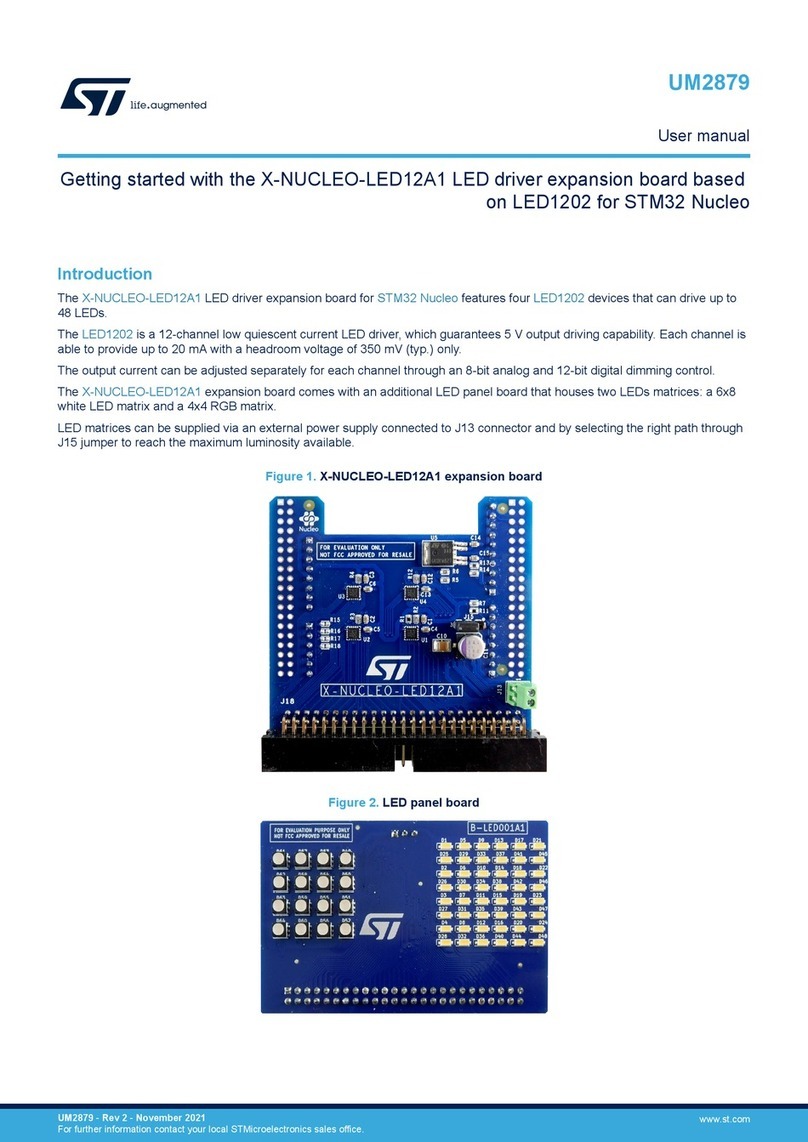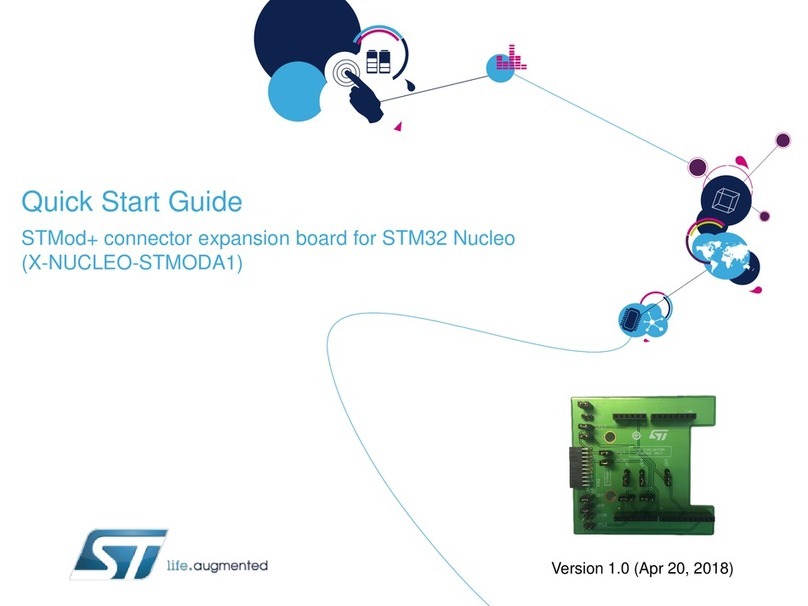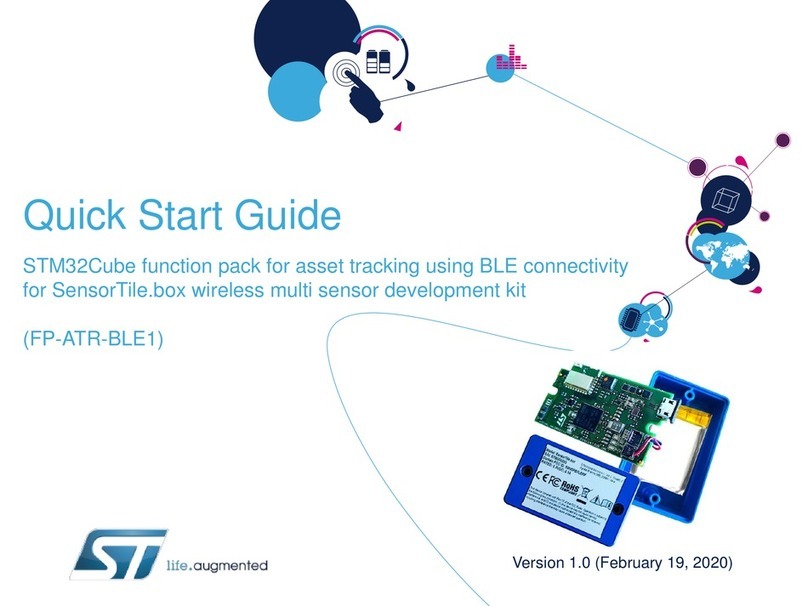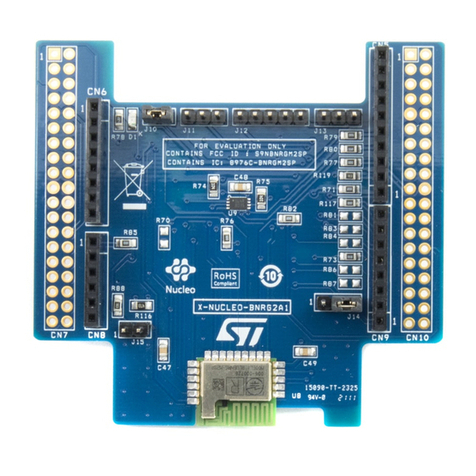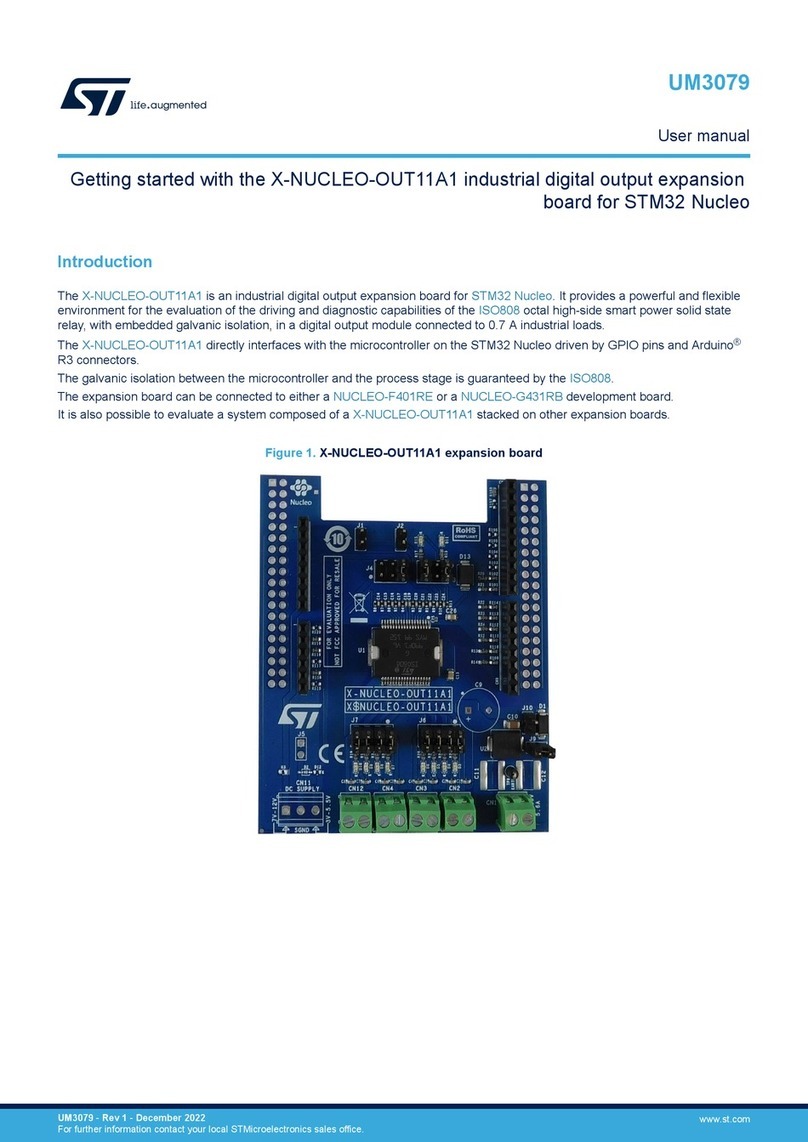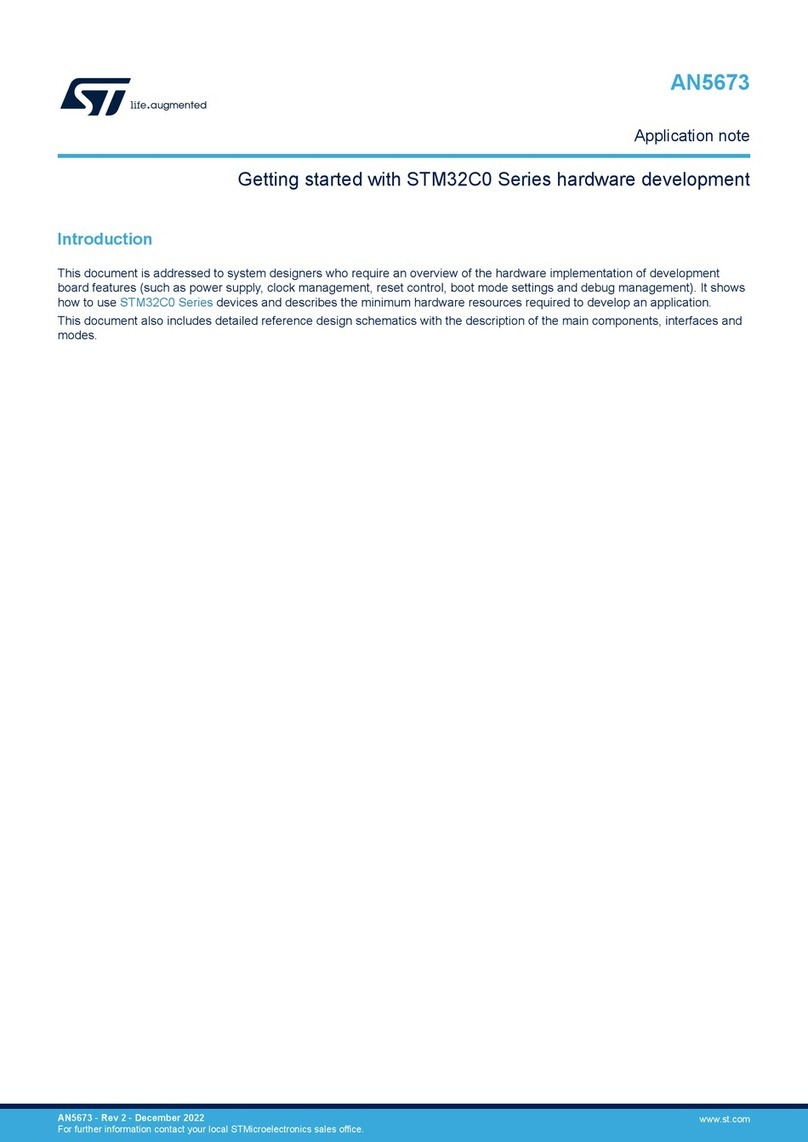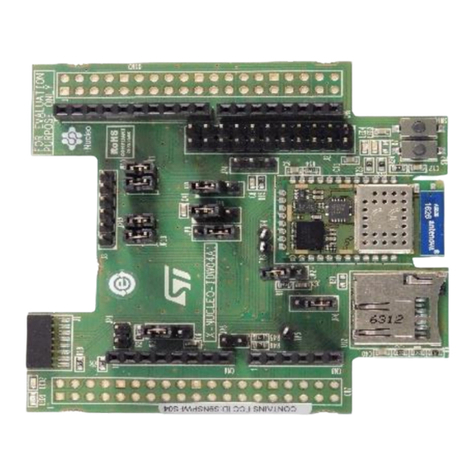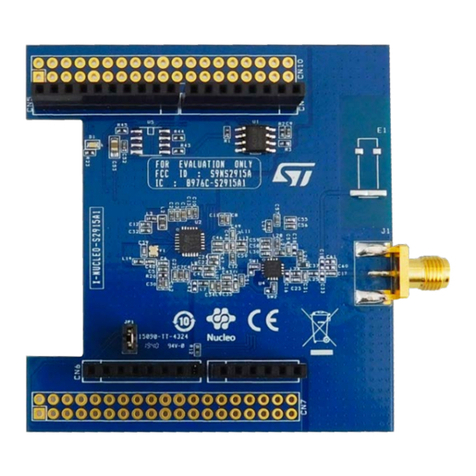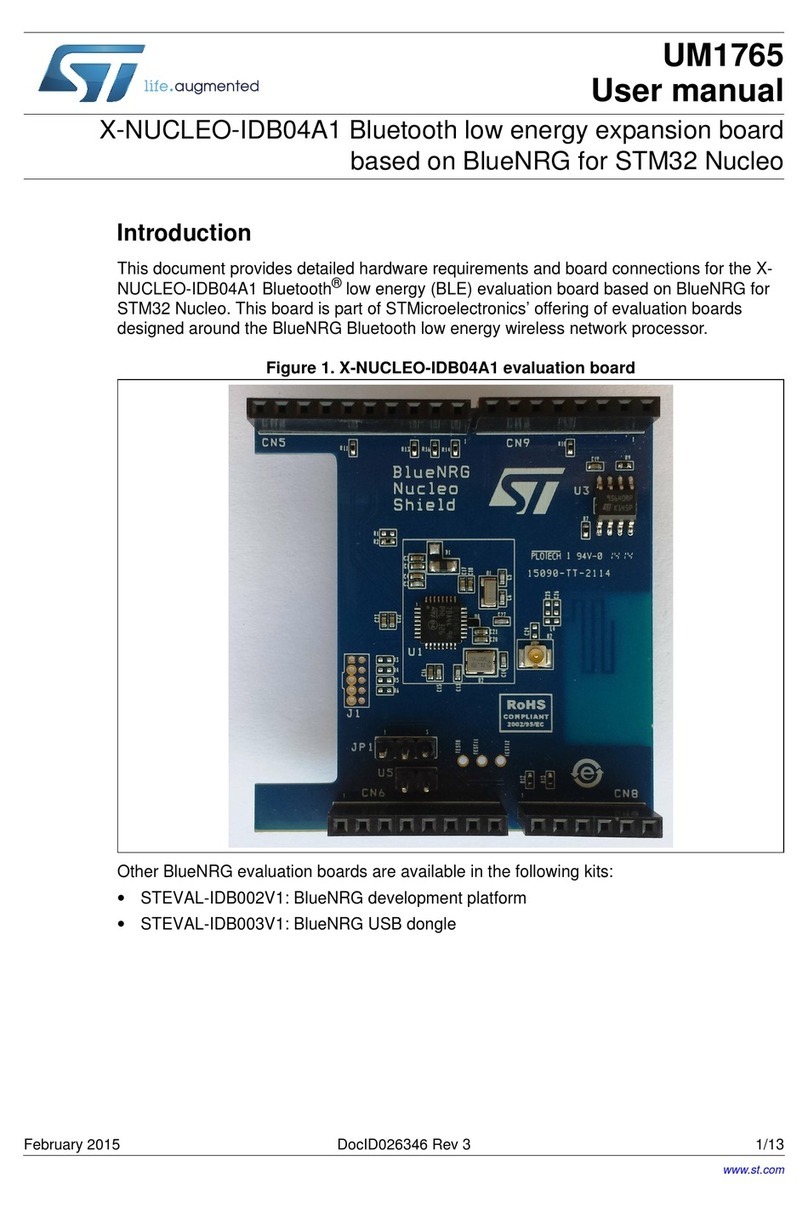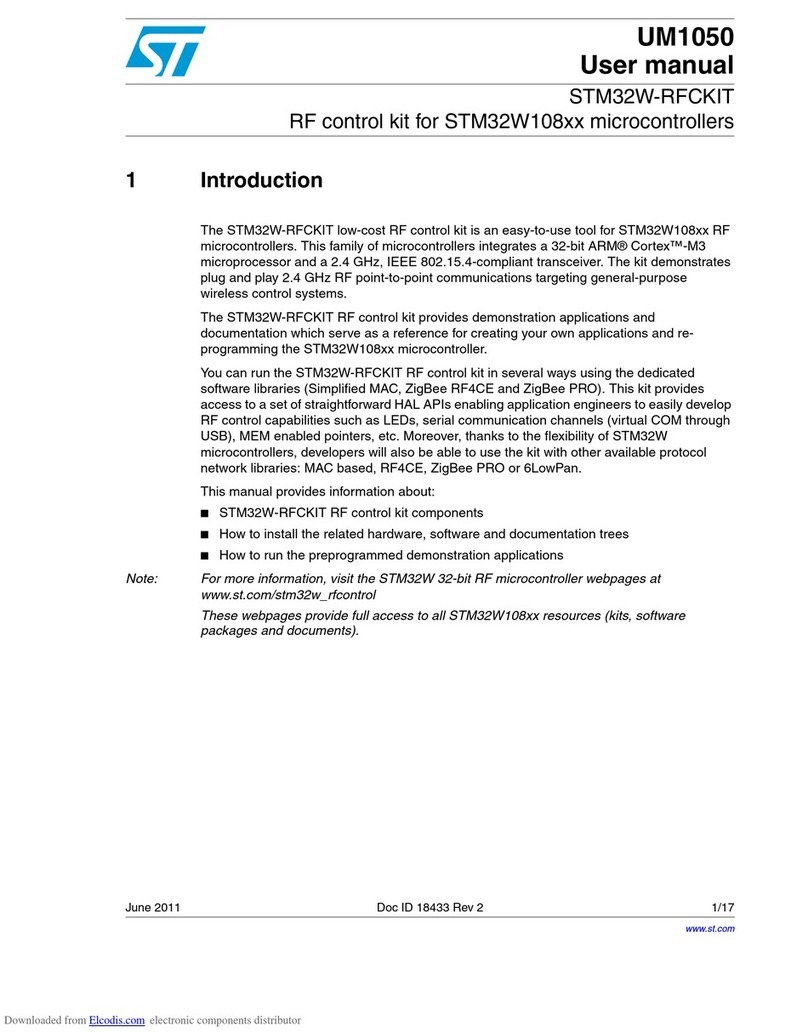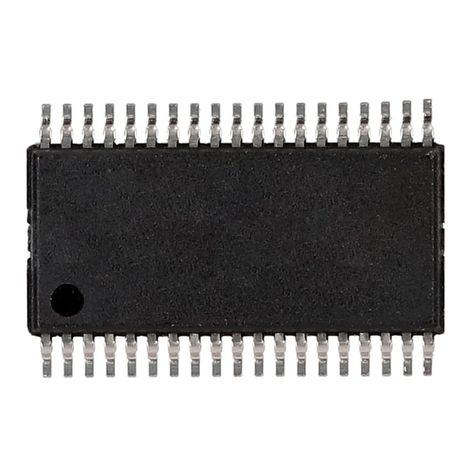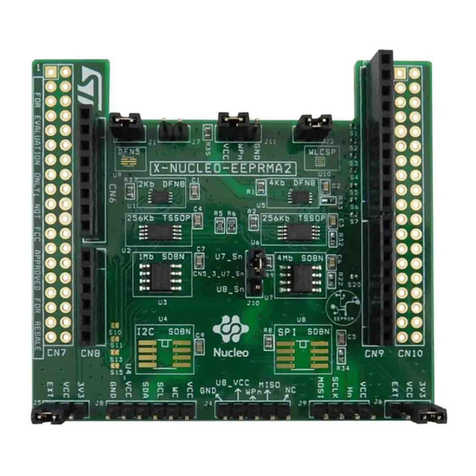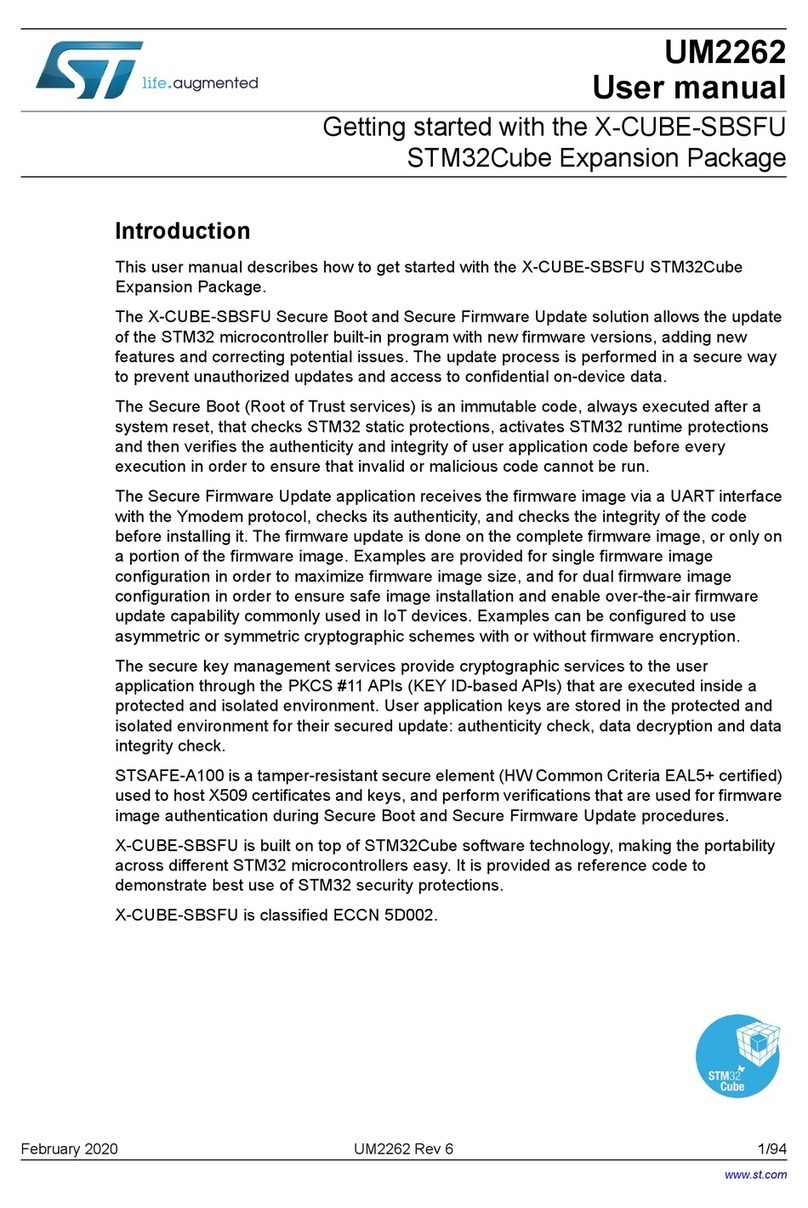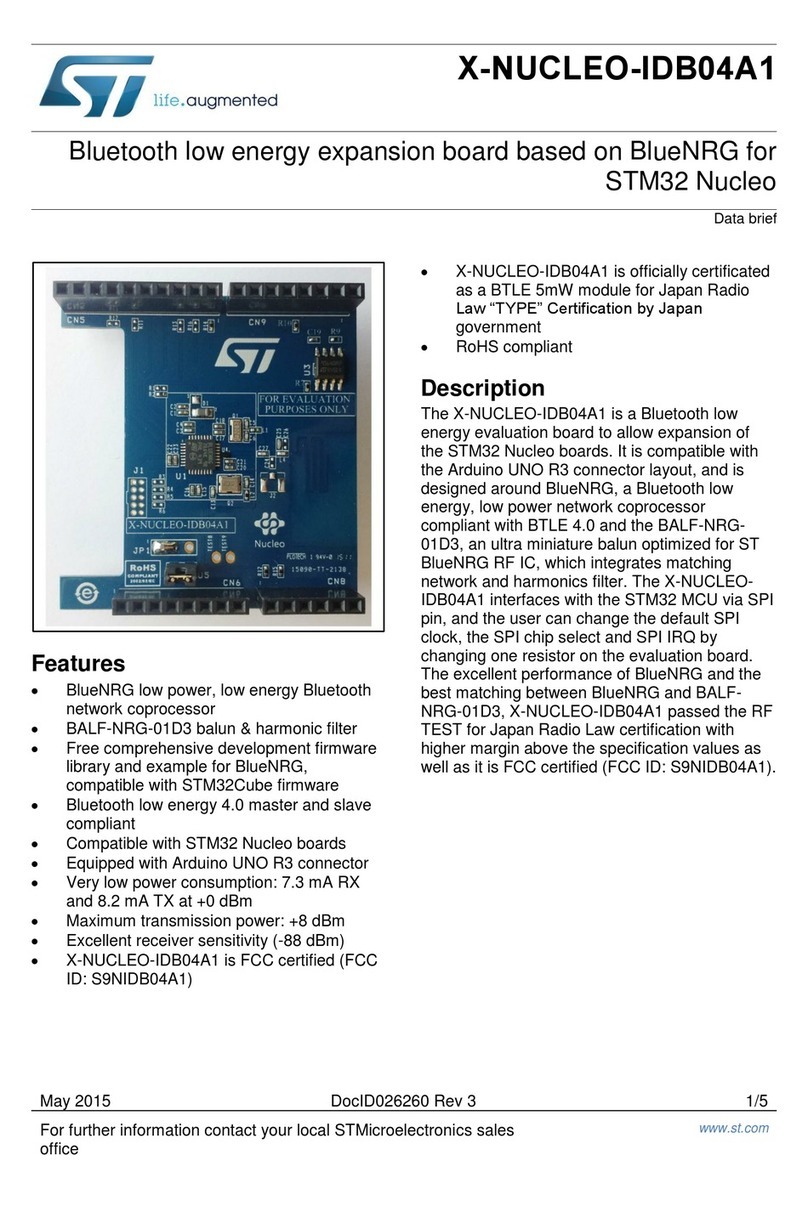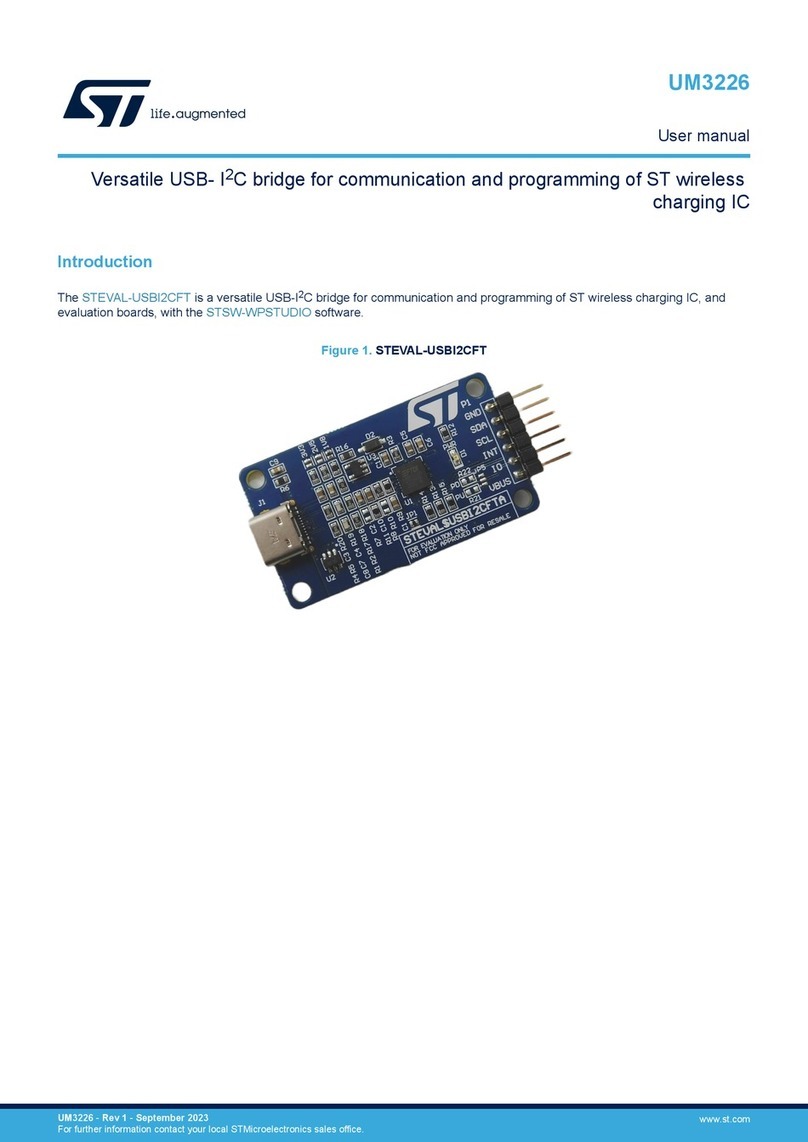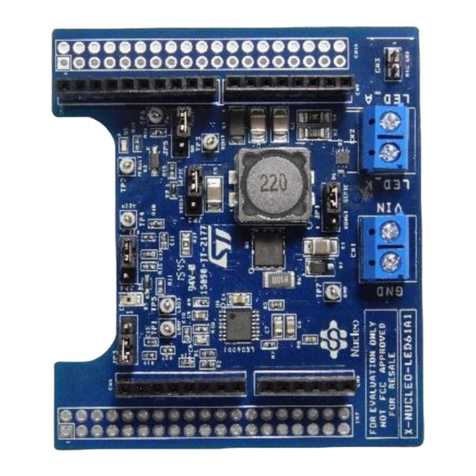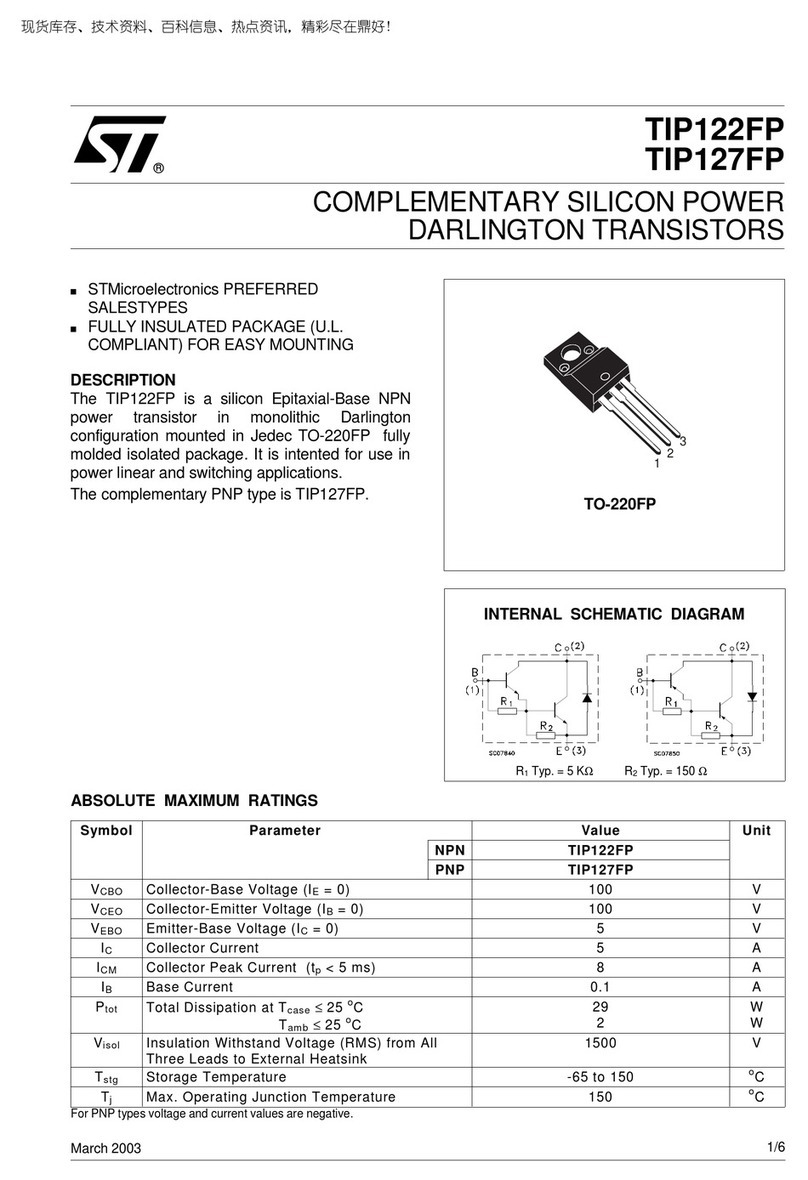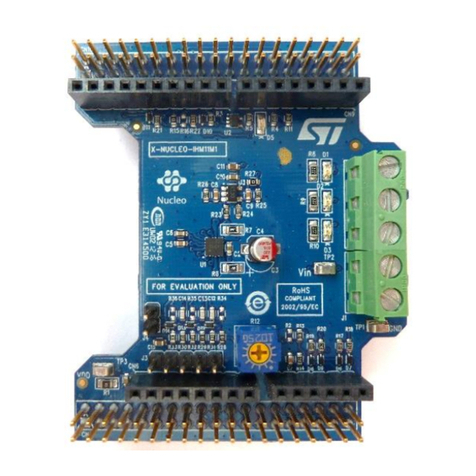
Contents UM1955
2/28 DocID028405 Rev 1
Contents
1 Instrumentation amplifier configuration . . . . . . . . . . . . . . . . . . . . . . . . . 4
1.1 Schematic diagram . . . . . . . . . . . . . . . . . . . . . . . . . . . . . . . . . . . . . . . . . . . 4
1.2 How to set up the board . . . . . . . . . . . . . . . . . . . . . . . . . . . . . . . . . . . . . . . 4
1.3 Theoretical output . . . . . . . . . . . . . . . . . . . . . . . . . . . . . . . . . . . . . . . . . . . . 5
1.4 Software and measurements . . . . . . . . . . . . . . . . . . . . . . . . . . . . . . . . . . . 5
2 Current sensing configuration . . . . . . . . . . . . . . . . . . . . . . . . . . . . . . . . . 6
2.1 Schematic diagram . . . . . . . . . . . . . . . . . . . . . . . . . . . . . . . . . . . . . . . . . . . 6
2.2 How to set up the board . . . . . . . . . . . . . . . . . . . . . . . . . . . . . . . . . . . . . . . 7
2.3 Theoretical output . . . . . . . . . . . . . . . . . . . . . . . . . . . . . . . . . . . . . . . . . . . . 7
2.4 Software and measurements . . . . . . . . . . . . . . . . . . . . . . . . . . . . . . . . . . . 8
3 Buffer configuration . . . . . . . . . . . . . . . . . . . . . . . . . . . . . . . . . . . . . . . . . 9
3.1 How to set up the board . . . . . . . . . . . . . . . . . . . . . . . . . . . . . . . . . . . . . . . 9
3.2 Theoretical output . . . . . . . . . . . . . . . . . . . . . . . . . . . . . . . . . . . . . . . . . . . . 9
4 Full wave rectifier . . . . . . . . . . . . . . . . . . . . . . . . . . . . . . . . . . . . . . . . . . 10
4.1 Schematic diagram . . . . . . . . . . . . . . . . . . . . . . . . . . . . . . . . . . . . . . . . . . 10
4.2 How to set up the board . . . . . . . . . . . . . . . . . . . . . . . . . . . . . . . . . . . . . . 10
4.3 Theoretical output . . . . . . . . . . . . . . . . . . . . . . . . . . . . . . . . . . . . . . . . . . . 10
4.4 Measurement example . . . . . . . . . . . . . . . . . . . . . . . . . . . . . . . . . . . . . . . 10
5 Photodiode/UV sensor . . . . . . . . . . . . . . . . . . . . . . . . . . . . . . . . . . . . . . 11
5.1 Schematic diagram . . . . . . . . . . . . . . . . . . . . . . . . . . . . . . . . . . . . . . . . . . .11
5.2 How to set up the expansion board . . . . . . . . . . . . . . . . . . . . . . . . . . . . . .11
5.3 Measurement example . . . . . . . . . . . . . . . . . . . . . . . . . . . . . . . . . . . . . . . .11
5.4 Additional possible use . . . . . . . . . . . . . . . . . . . . . . . . . . . . . . . . . . . . . . . 12
6 LED driver configuration . . . . . . . . . . . . . . . . . . . . . . . . . . . . . . . . . . . . 13
6.1 Schematic diagram . . . . . . . . . . . . . . . . . . . . . . . . . . . . . . . . . . . . . . . . . . 13
6.2 How to set up the board . . . . . . . . . . . . . . . . . . . . . . . . . . . . . . . . . . . . . . 14
7 Window comparator configuration . . . . . . . . . . . . . . . . . . . . . . . . . . . . 15
